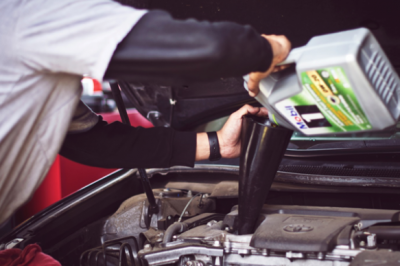Keeping up with car maintenance can be exhausting. Rotating the tires to ensure they’re in top-notch condition and changing the oil now and then can be annoying – we know. But paying for minor repairs to ensure major ones don’t hurt you, in the long run, is going to be worth it.
For an older vehicle, every day without a repair is a win. Little efforts to ensure your car keeps running smoothly can curb several car repair costs. But to ensure you get all of them done in due time, there are a few car repair tips that must stay at your fingertips.
Allow us to elaborate.
Keep Checking Your Car’s Air Filter
Many of your car’s problems arise when its air filters get clogged or if they become loose. Your car’s air filters block pollen, dust, and other contaminants, which, in turn, keeps your car healthy. But when the air filter becomes dirty, the airflow into the engine can reduce, which may also reduce your car’s horsepower.
Meaning, your car will become less fuel-efficient. Experts recommend that you replace your car’s air filters every 12,000 miles.
Protect Your Car’s Headlights
Every month, park yourself against a flat surface and turn on both of its headlights. Now check the reflection against the wall to see whether they’re working perfectly and if they’re well-positioned. Moreover, inspect both of your car’s signals by walking around the car. You can also ask a friend to stand behind the car while pressing the brake to engage the brake lights.
This test is essential because you never know when your indicators may fail!
Keep Checking the Tires
Check your car’s tire pressure and increase the pressure if necessary. An excessively low tire pressure or a high tire pressure may change how your car cruises on the road. It may also cause increased wear and tear, which may shorten the lifespan of your car.
A car’s tire needs to have the perfect shape with the least possible tread depth (1.6mm).
Keep Checking the Car’s Battery
A car’s battery needs to be checked every three years. A faulty or a flat battery is one of the most common reasons a vehicle breaks down. According to experts, your engine’s giving you a warning sign if a car’s engine turns on slower than it should.
Moreover, the red battery switch may flicker while you’re driving. This is also a sign of a battery nearing death.
Always Carry a Toolkit
People who follow the principle “better safe than sorry” usually have one at all times. We’re not asking you to carry every tool you can find; you just need to have the basics, such as:
- Pliers
- A multi-tip screwdriver
- A flashlight
- Socket wrenches
- Zip ties
- Duct tape
Carrying these tools can be the difference between a quick fix and you standing by the road waiting for a tow truck. Even if you’re on your way home, it’s a lot better than the long wait.
Use Jack Stands
A jack stand is a safety tool that goes under the car when anyone tries to lift it in the air. It is typically made for two adjustable heights. Quite simply, a jack stand is supposed to catch a car if a hydraulic jack fails to do its job. So if you’re working in the car, this could be the difference between life and death.
Get a good stand and use it whenever you’re under the car or by the wheel. No matter the difficulty or the time a job takes you, always use a jack stand!
Wash Your Car Regularly
Do you know how everyone keeps telling us to drink a lot of water? We all know it’s good for us, but somehow we can’t remember to drink water regularly. Your car can easily get dirty from road oils, water, dirt, road salt, and several other invaders that can wear down vital components of your car.
Like leftover candy on a tooth, the longer these contaminants stay on your car, the more damage they can potentially do. There’s no specific rule which dictates when you should wash your car because conditions are different in every case (how you drive, where you live, how often you’re on the road, etc.)
However, you should still always be aware of the dirt on your car for the best judgement.
Keep Checking the Car’s Oil Level
There are many mechanical moving parts in a car’s engine. As they brush against each other, they create fiction. This friction creates heat which can reduce the engine’s efficiency significantly. So if you’re unable to eliminate friction, minimising it ensures the car operates smoothly. If you don’t, you may hear loud noises from the engine and see a significant reduction in fuel economy.
That is why regularly checking your car’s engine oil should be a vital part of your car’s maintenance routine. It’s also important that you look at the colour of the oil. The oil shouldn’t be black because the dark colour can usually indicate the presence of contaminants, additional chemicals, or excessive heat. Your car’s manual will tell you the frequency of the car’s oil change.
Clean the Brake Rust from the Wheels
The brake dust on your car won’t affect the brake’s ability to function, but it may make your car’s wheel unpleasant to look at. When you use the brake, different materials come in contact, be it the brake’s rotor or the brake pad. 92% of the dust on the wheels is iron, and the remaining 8% is grime, carbon, or dirt.
If these are exposed to the sun, they can leave heavy stains on your car’s wheel. To ensure this doesn’t happen, make sure you clean the dust from the wheels with a damp sponge. Since dust can typically latch on to your wheels via static electricity, you’ll need cold water.
Conclusion
Even though ensuring your car stays in top condition can be less expensive than opting for major repairs, the costs can still add up in the long run. So how do you ensure your roadster stays in mint condition while sticking to a budget?
Easy. Opt for a loan from a website like lightningloans.com.au and say goodbye to all budgeting constraints!






